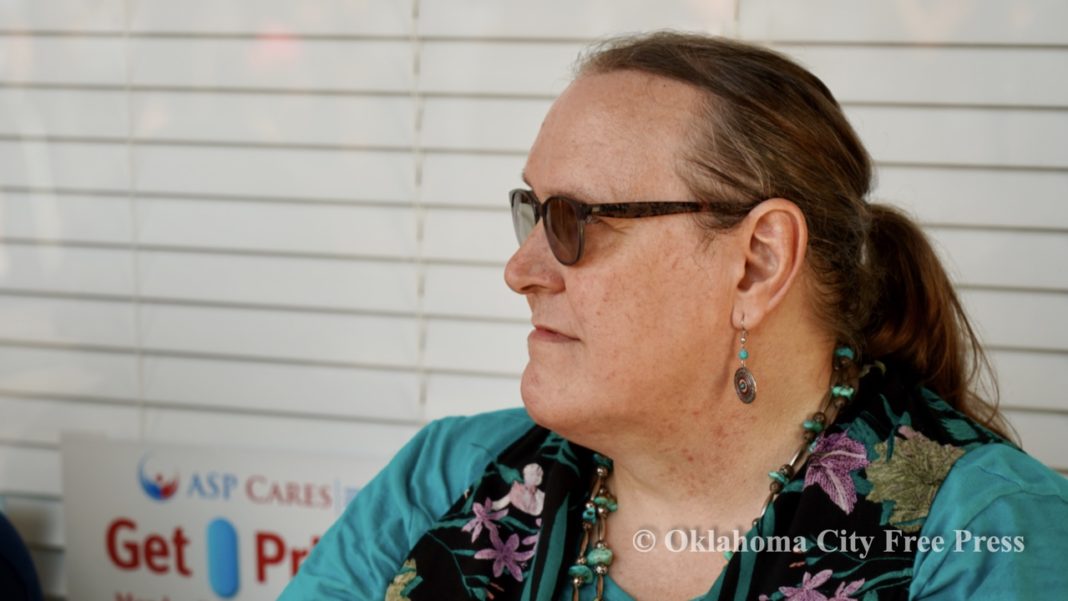Last Updated on January 5, 2024, 12:57 AM | Published: June 20, 2021
Paula Sophia Schonauer, LCSW, continues a serial memoir. If you haven’t read the earlier parts of this series, look at the bottom of this page.
Leaving me to doubt, Talk about, God in His mercy; Oh, if he really does exist
Why did he desert me? In my hour of need, I truly am indeed
Alone again, naturally.
— Gilbert O’Sullivan, 1972
John Milton observed, “Loneliness is the first thing which God’s eye named not good.” He stated this as a reaction to Genesis 2:18, “Then the Lord God said, ‘It is not good that the man should be alone; I will make him a helper as his partner” NRSV.
It is especially important to understand God’s observation here comes before the Fall, which Milton addresses so eloquently in his epic poem, Paradise Lost. So, before the first sin, there is something described as “not good.” A binary understanding regarding good and evil may lead one to see that a sense of isolation or a forlorn disposition existed before the first sin, and anything “not good” must be evil.
For those who believe in the absolute perfection of God, loneliness appears to be a weakness, a neediness ingrained in a human being who had been created in God’s image, and if the reflection of God is made with loneliness, then it is not unreasonable to see God as knowing loneliness and understanding it as “not good.” A God eternally immersed in perfection is a being set apart, and by its perfection, is perfectly alone, hardly an ideal existence, plausible only as abstract contemplation.
The singularity of God’s spirit moving (fluttering or hovering) over the deep in Genesis 1:2 implies profound isolation in a space absent of form, empty and dark. It is plausible that a God who knows loneliness would create a world of people with whom God seeks relationships, and, in turn, people are to reciprocate, creating a mutuality that solves the problem of loneliness. However, when people reject God’s presence, they separate themselves from God’s divine purpose.

According to C.S. Lewis, loneliness is a component of hell. In his book The Great Divorce, hell is a vast city called Grey Town with millions upon millions of homes, decrepit and crumbling, gloomy with perpetual rain. The people in hell wander deeper into the city, further away from each other, further into their own selfishness and misery, until they are utterly alone and have nothing, not even their humanity.
To the human psyche, loneliness is traumatic with potentially devastating consequences, which is why solitary confinement has been recognized as a cruel and unusual punishment. People who have been subjected to enforced isolation often experience diminished cognitive function. They lose their ability to recognize human faces, have no sense of direction, and have difficulty judging spatial relationships, all of which indicate how loneliness and isolation impact brain function. Additionally, isolation impacts social and familial relationships, impairing people’s ability to connect through meaningful engagement.
Loneliness contributes to the development of mental disorders: depression, anxiety, and in some cases, psychotic symptoms. Lack of social connection can also influence the development of disease, often manifesting as obesity, substance abuse, and premature death.
Shame has a profound impact on people’s sense of loneliness, compelling them to retreat from social engagement. People who experience a great deal of shame want to disappear from public view, or, if unable to refrain from human interaction altogether, will limit contact as much as possible. They often lack social skills and have low self-esteem. They are the people alone in a crowd.
To feel shame, people must feel they have transgressed a social norm, a norm which is desirable and binding, a norm allowing access to approval and acceptance. Often, shame is brought by the presence of a disapproving person, a parent or teacher, critical peers, and rigid social structures, the kind encountered in religious communities, social groups, subcultures, and professional associations. We need not have a disapproving person present in our lives to feel shame, only to imagine someone’s judgment. Often, we have a chorus of voices in our minds telling us what is worthy of approval and what is regarded as forbidden.
Shame is deeper than guilt. While guilt is tied to behavior, shame is attached to a person’s sense of being. Guilt, basically, is something that tells us we did something wrong, but shame is something that tells us we are wrong. It is an important distinction. A guilty person can more easily atone for a wrong deed by paying a penalty, serving time, or by participating in a restorative process that removes a burden of debt. Shame, though, affects a person’s core identity in a profound way, impeding the impact of forgiveness, pardon, and the process of restoration. A person encumbered with shame may alienate herself from the community, enforce her own isolation, and damn herself to hell.
By my third year at Redeemer Christian School, I had a sense of shame embedded deep in my being. I was ashamed of myself as someone who had been sexually assaulted by another boy, not knowing the difference between consent and force. I was ashamed of myself for wanting to be a girl, convincing myself I was wrong no matter what I did, but I hoped, somehow, I could be forgiven, pardoned, or restored by faith.
My family did not have many faith related objects in the home. Apart from Mom’s little Jesus statue and her portrait of the Aryan Christ, the only other thing was Dad’s vinyl album of Jesus Christ Superstar. I listened to it repeatedly, finding myself identifying with Judas and his struggle to love Jesus, devastated by his suicide. I was also haunted by the crucifixion scene, the murmuring voices and echoing laughter behind Jesus’ plea for relief, his despair when he shouts, “My God, My God, why have you forgotten me!”
Feeling left behind and unworthy, my hope was in Jesus, his profound suffering, his descent into hell, and his ascension to heaven. In basic Christian doctrine, my hope can be seen as a turn toward grace, but I was more identified in the person of Jesus, wanting to be blameless, even innocent, and perfect. His suffering became emblematic of my own suffering, and I drew comfort from the crucifixion.
Since we did not have a crucifix at home, no crosses, no jewelry, I decided to make one for myself. I found two boards, nailed them together to create my own cross, and for the figure of Jesus, I used an action figure from a collection of Johnny West dolls I had been given for a birthday present the year before. Johnny West was like G.I. Joe in basic shape and size but with an Old West theme. I had a Johnny West doll, Sam the Renegade, and Geronimo. The Geronimo doll had a clean-shaven face, but he had long hair and was dressed in white buffalo skins, which to me, conveyed his holiness. I took the twelve-inch doll and nailed it to my cross, piercing the hands with tacs, the feet with nails, and to keep him from falling off the cross, I bound his waist with a thick rubber band.
I took my crucifix to bed with me, propping it against the wall so I could see Geronimo’s stoic face gazing at me throughout the night, keeping watch, protecting me from evil, from nightmares, and from the shadows that crept by my bedroom door. The crucifix helped me feel less alone because, somehow, I knew Jesus understood the pain of loneliness.
This post is the latest of a serial memoir Paula Sophia is writing about her life. We are honored that she chose Free Press as the platform. The following links are to earlier parts of the memoir.
- Manhood, from the inside out — Memoir and Mythology
- Part 2 — Cubby Hole
- Part 3 — Magic Carpet Cocoons
- Part 4 — Snips and Snails and Puppy-Dogs’ Tails
- Part 5 — Mirror
- Part 6 – Deep Water
- Part 7 – Limbo
- Part 8 – Dissociation
- Part 9 – Shame
- Part 10 – Judgement Day
- Part 11 – Inferno
- Part 12 – Haunted
- Part 13 – Did I say that?
- Part 14 – The end times
Guest Columnist Paula Sophia is a licensed clinical social worker in Oklahoma City and a former Oklahoma City Police Officer.







